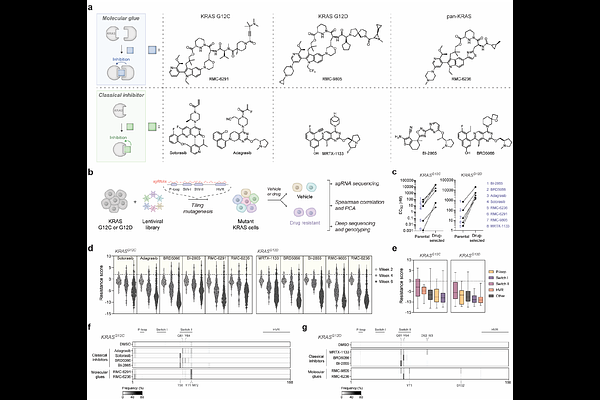Orthogonal resistance mechanisms of classical- and induced-proximity inhibitors

Orthogonal resistance mechanisms of classical- and induced-proximity inhibitors
Merz, M. L.; Kailass, K.; Pergu, R.; Tran, K.; Gupta, K.; Severance, Z. C.; Singh, S.; Vedagopuram, S.; Law, B. K.; Rosenblatt, G.; Dhaliwal, R.; Choudhary, A.
AbstractResistance development is an inevitable failure mode of many drugs, pointing to the need to develop agents with orthogonal resistance mechanisms. Induced-proximity modalities, an emergent class of therapeutics, target protein-of-interest (POI) activity by forming a ternary complex with target and effector proteins, unlike classical inhibitors that form binary complexes. Using KRAS as a model system, we employed base editor tiling mutagenesis screening to show that induced-proximity inhibitors (e.g., molecular glues) exhibit orthogonal resistance mechanisms to classical inhibitors despite overlapping binding sites, offering an opportunity to circumvent resistance mechanisms of classical inhibitors. These findings highlight the use of base editor mutagenesis screens to prioritize inhibitors with orthogonal resistance mechanisms and the potential of induced-proximity inhibitors to overcome the drug resistance of classical inhibitors.